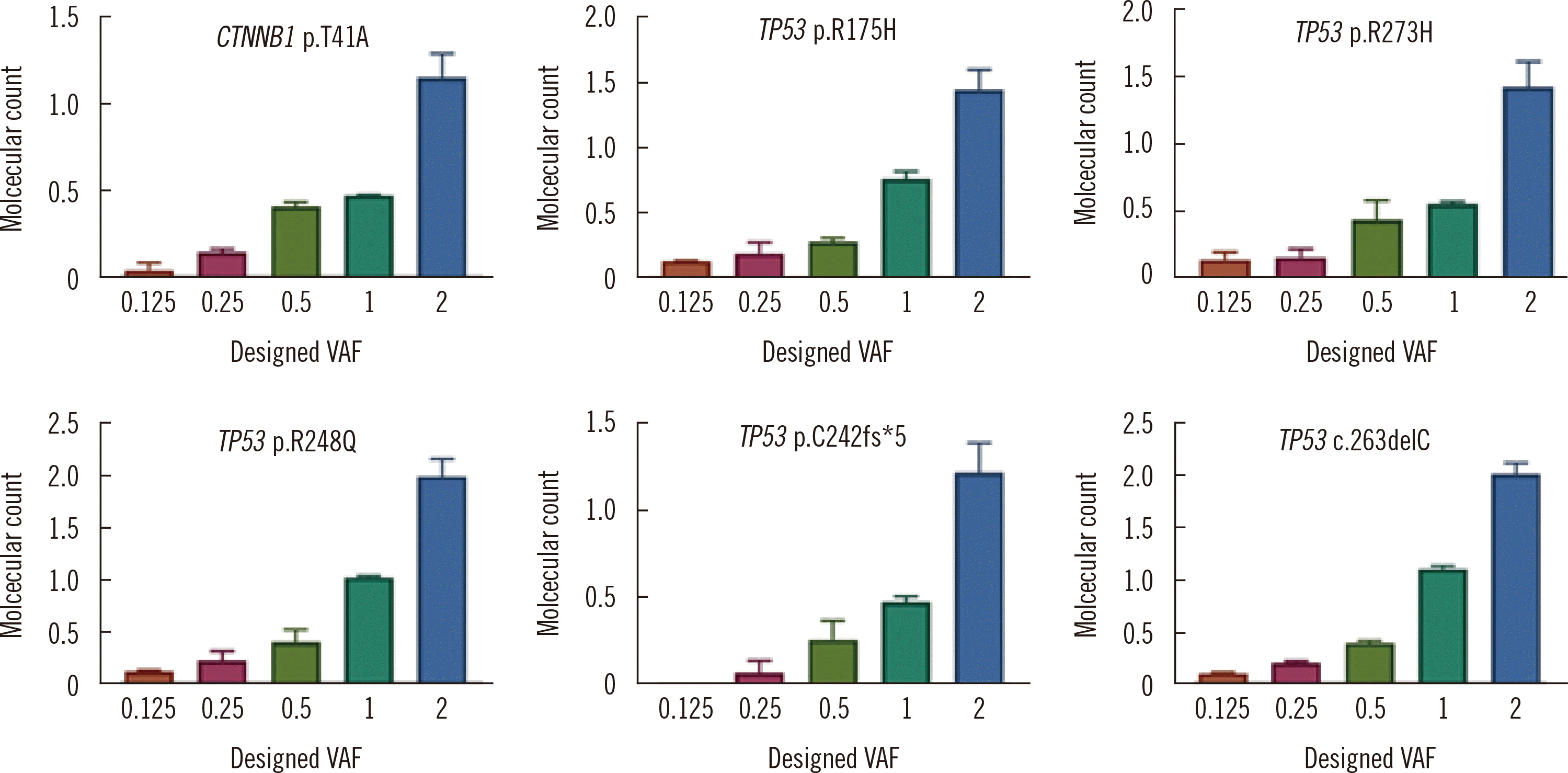1. Ferlay J, Soerjomataram I, Dikshit R, Eser S, Mathers C, Rebelo M, et al. 2015; Cancer incidence and mortality worldwide: sources, methods and major patterns in GLOBOCAN 2012. Int J Cancer. 136:E359–86. DOI:
10.1002/ijc.29210. PMID:
25220842.

2. Korean Liver Cancer Association and National Cancer Center. 2019; 2018 Korean Liver Cancer Association-National Cancer Center Korea practice guidelines for the management of hepatocellular carcinoma. Gut Liver. 13:227–99. DOI:
10.5009/gnl19024. PMID:
31060120. PMCID:
PMC6529163.


3. Farokhizadeh Z, Dehbidi S, Geramizadeh B, Yaghobi R, Malekhosseini SA, Behmanesh M, et al. 2019; Association of microRNA polymorphisms with hepatocellular carcinoma in an Iranian population. Ann Lab Med. 39:58–66. DOI:
10.3343/alm.2019.39.1.58. PMID:
30215231.

4. Yang JD. 2019; Detect or not to detect very early stage hepatocellular carcinoma? The western perspective. Clin Mol Hepatol. 25:335–43. DOI:
10.3350/cmh.2019.0010. PMID:
30924328.



5. Yang K, Sung PS, You YK, Kim DG, Oh JS, Chun HJ, et al. 2019; Pathologic complete response to chemoembolization improves survival outcomes after curative surgery for hepatocellular carcinoma: predictive factors of response. HPB (Oxford). 21:1718–26. DOI:
10.1016/j.hpb.2019.04.017. PMID:
31171489.


6. Sung PS, Yang H, Na GH, Hwang S, Kang D, Jang JW, et al. 2017; Long-term outcome of liver resection versus transplantation for hepatocellular carcinoma in a region where living donation is a main source. Ann Transplant. 22:276–84. DOI:
10.12659/AOT.904287. PMID:
28473688.


7. Li VD, Li KH, Li JT. 2019; TP53 mutations as potential prognostic markers for specific cancers: analysis of data from The Cancer Genome Atlas and the International Agency for Research on Cancer TP53 Database. J Cancer Res Clin Oncol. 145:625–36. DOI:
10.1007/s00432-018-2817-z. PMID:
30542790.


8. Khemlina G, Ikeda S, Kurzrock R. 2017; The biology of hepatocellular carcinoma: implications for genomic and immune therapies. Mol Cancer. 16:149. DOI:
10.1186/s12943-017-0712-x. PMID:
28854942. PMCID:
PMC5577674.



9. Huang Z, Hua D, Hu Y, Cheng Z, Zhou X, Xie Q, et al. 2012; Quantitation of plasma circulating DNA using quantitative PCR for the detection of hepatocellular carcinoma. Pathol Oncol Res. 18:271–6. DOI:
10.1007/s12253-011-9438-z. PMID:
21779787.


10. Yang YJ, Chen H, Huang P, Li CH, Dong ZH, Hou YL. 2011; Quantification of plasma hTERT DNA in hepatocellular carcinoma patients by quantitative fluorescent polymerase chain reaction. Clin Invest Med. 34:E238. DOI:
10.25011/cim.v34i4.15366. PMID:
21810382.

11. Schulze K, Imbeaud S, Letouzé E, Alexandrov LB, Calderaro J, Rebouissou S, et al. 2015; Exome sequencing of hepatocellular carcinomas identifies new mutational signatures and potential therapeutic targets. Nat Genet. 47:505–11. DOI:
10.1038/ng.3252. PMID:
25822088. PMCID:
PMC4587544.



12. Totoki Y, Tatsuno K, Covington KR, Ueda H, Creighton CJ, Kato M, et al. 2014; Trans-ancestry mutational landscape of hepatocellular carcinoma genomes. Nat Genet. 46:1267–73. DOI:
10.1038/ng.3126. PMID:
25362482.


13. Diehl F, Schmidt K, Choti MA, Romans K, Goodman S, Li M, et al. 2008; Circulating mutant DNA to assess tumor dynamics. Nat Med. 14:985–90. DOI:
10.1038/nm.1789. PMID:
18670422. PMCID:
PMC2820391.


15. Vollbrecht C, Lehmann A, Lenze D, Hummel M. 2018; Validation and comparison of two NGS assays for the detection of
EGFR T790M resistance mutation in liquid biopsies of NSCLC patients. Oncotarget. 9:18529–39. DOI:
10.18632/oncotarget.24908. PMID:
29719623. PMCID:
PMC5915090.


17. Fujimoto A, Furuta M, Totoki Y, Tsunoda T, Kato M, Shiraishi Y, et al. 2016; Whole-genome mutational landscape and characterization of noncoding and structural mutations in liver cancer. Nat Genet. 48:500–9. DOI:
10.1038/ng.3547. PMID:
27064257.


18. Heimbach JK, Kulik LM, Finn RS, Sirlin CB, Abecassis MM, Roberts LR, et al. 2018; AASLD guidelines for the treatment of hepatocellular carcinoma. Hepatology. 67:358–80. DOI:
10.1002/hep.29086. PMID:
28130846.


19. Jeong TD, Kim MH, Park S, Chung HS, Lee JW, Chang JH, et al. 2019; Effects of pre-analytical variables on cell-free DNA extraction for liquid biopsy. Lab Med Online. 9:45–56. DOI:
10.3343/lmo.2019.9.2.45.

20. He HJ, Stein EV, Konigshofer Y, Forbes T, Tomson FL, Garlick R, et al. 2019; Multilaboratory assessment of a new reference material for quality assurance of cell-free tumor DNA measurements. J Mol Diagn. 21:658–76. DOI:
10.1016/j.jmoldx.2019.03.006. PMID:
31055023. PMCID:
PMC6626992.



21. Rebouissou S, Franconi A, Calderaro J, Letouzé E, Imbeaud S, Pilati C, et al. 2016; Genotype-phenotype correlation of
CTNNB1 mutations reveals different β-catenin activity associated with liver tumor progression. Hepatology. 64:2047–61. DOI:
10.1002/hep.28638. PMID:
27177928.

22. Kaseb AO, Sánchez NS, Sen S, Kelley RK, Tan B, Bocobo AG, et al. 2019; Molecular profiling of hepatocellular carcinoma using circulating cellfree DNA. Clin Cancer Res. 25:6107–18. DOI:
10.1158/1078-0432.CCR-18-3341. PMID:
31363003.


23. Howell J, Atkinson SR, Pinato DJ, Knapp S, Ward C, Minisini R, et al. 2019; Identification of mutations in circulating cell-free tumour DNA as a biomarker in hepatocellular carcinoma. Eur J Cancer. 116:56–66. DOI:
10.1016/j.ejca.2019.04.014. PMID:
31173963.


24. Schmitt MW, Kennedy SR, Salk JJ, Fox EJ, Hiatt JB, Loeb LA. 2012; Detection of ultra-rare mutations by next-generation sequencing. Proc Natl Acad Sci U S A. 109:14508–13. DOI:
10.1073/pnas.1208715109. PMID:
22853953. PMCID:
PMC3437896.



25. Ng CKY, Di Costanzo GG, Tosti N, Paradiso V, Coto-Llerena M, Roscigno G, et al. 2018; Genetic profiling using plasma-derived cell-free DNA in therapy-naive hepatocellular carcinoma patients: a pilot study. Ann Oncol. 29:1286–91. DOI:
10.1093/annonc/mdy083. PMID:
29509837.







 PDF
PDF Citation
Citation Print
Print


 XML Download
XML Download